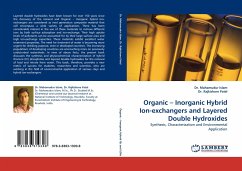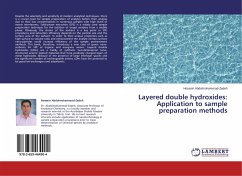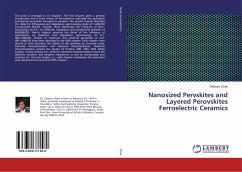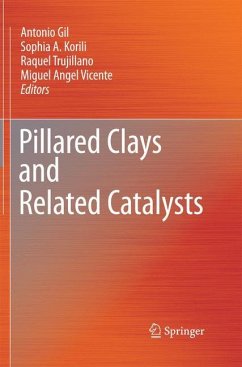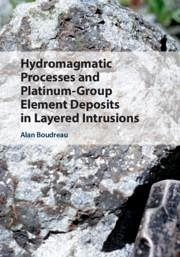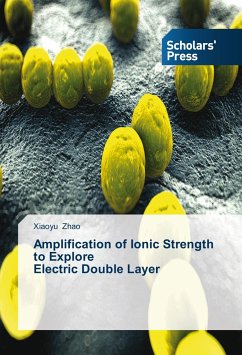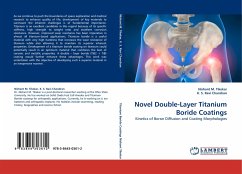
Stearate Intercalated Layered Double Hydroxides
Methods and Applications
Versandkostenfrei!
Versandfertig in 6-10 Tagen
32,99 €
inkl. MwSt.

PAYBACK Punkte
16 °P sammeln!
Stearate anions (SA) were successfully intercalatedinto a layered double hydroxide (LDH-CO3) to formLDH-SA. The intercalation method involved theacid-base reaction between emulsified stearic acidand carbonate anions in aqueous media. This methodled to the formation of more LDH-SA than well knownmethods such as melting the carboxylic acid in thepresence of the LDH, allowing the interlayer regionto swell in the presence of glycerol andreconstructing the calcined LDH in the presence ofaqueous sodium stearate. Other literature methodsinvolve ion-exchange of chloride in LDH-Cl withstearate in aqueo...
Stearate anions (SA) were successfully intercalated
into a layered double hydroxide (LDH-CO3) to form
LDH-SA. The intercalation method involved the
acid-base reaction between emulsified stearic acid
and carbonate anions in aqueous media. This method
led to the formation of more LDH-SA than well known
methods such as melting the carboxylic acid in the
presence of the LDH, allowing the interlayer region
to swell in the presence of glycerol and
reconstructing the calcined LDH in the presence of
aqueous sodium stearate. Other literature methods
involve ion-exchange of chloride in LDH-Cl with
stearate in aqueous sodium stearate, usually under
nitrogen atmosphere. The LDH-SA was successfully used
to intercalate sodium polyvinyl sulphonate by an ion
exchange with the intercalated stearate, without the
need for a nitrogen atmosphere. The same
intercalation reaction was allowed to take place in
situ during the formation of
dextrin-alginate-glycerol film solutions in
water-ethanol media. The stearate intercalated as a
bilayer in the interlayer region of the LDH. This
reduced the water vapour permeability of the films.
into a layered double hydroxide (LDH-CO3) to form
LDH-SA. The intercalation method involved the
acid-base reaction between emulsified stearic acid
and carbonate anions in aqueous media. This method
led to the formation of more LDH-SA than well known
methods such as melting the carboxylic acid in the
presence of the LDH, allowing the interlayer region
to swell in the presence of glycerol and
reconstructing the calcined LDH in the presence of
aqueous sodium stearate. Other literature methods
involve ion-exchange of chloride in LDH-Cl with
stearate in aqueous sodium stearate, usually under
nitrogen atmosphere. The LDH-SA was successfully used
to intercalate sodium polyvinyl sulphonate by an ion
exchange with the intercalated stearate, without the
need for a nitrogen atmosphere. The same
intercalation reaction was allowed to take place in
situ during the formation of
dextrin-alginate-glycerol film solutions in
water-ethanol media. The stearate intercalated as a
bilayer in the interlayer region of the LDH. This
reduced the water vapour permeability of the films.



